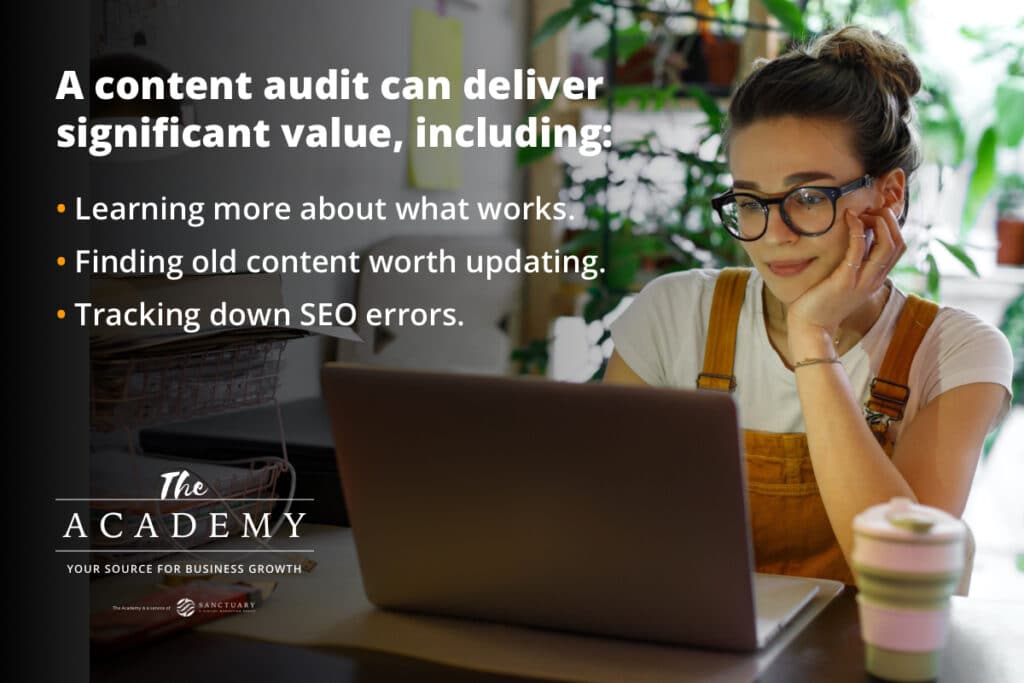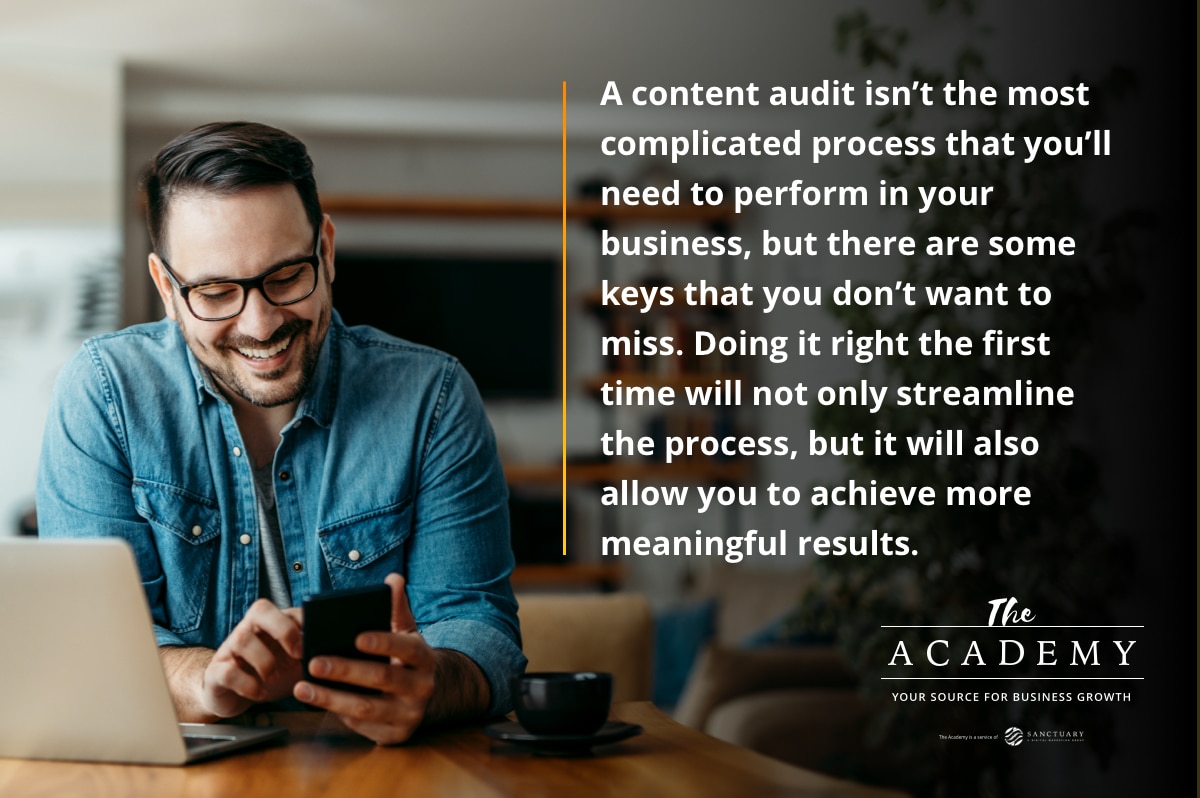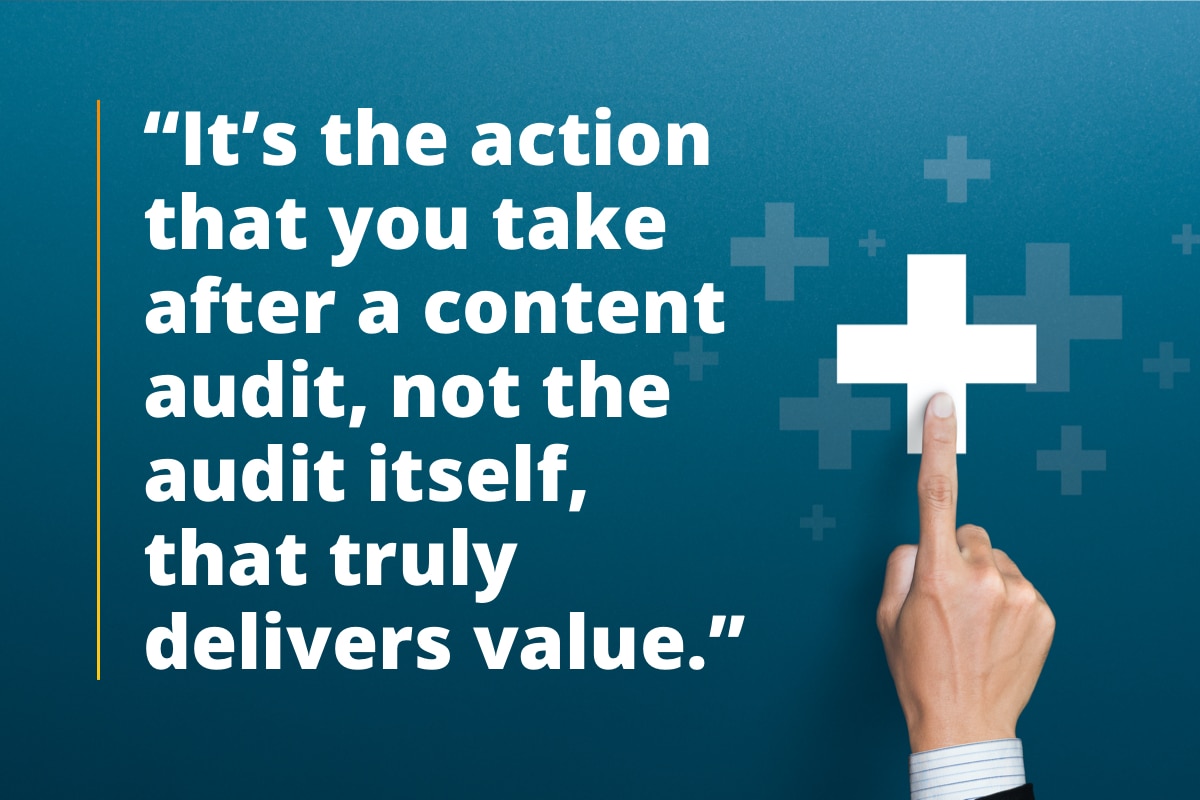
Content is the lifeblood of a website. When you think about it, a website is little more than a collection of pieces of content that have been dressed up through the use of images, buttons, links, and other elements. Without quality, relevant, targeted content on your site, everything else you do is likely to go to waste.
To make sure you are getting the most out of your site and the content that it offers to visitors, performing a periodic content audit is a great strategy. As the name suggests, a content audit involves reviewing all of the pieces of content on your site to see how they are working, if any issues need to be resolved, and what holes might exist in your current collection of pages. Given the modest time and effort required to go through a content audit, and the powerful impact it can have on the future of your site, this is a task that should rank high on your priority list.
Let’s use the article below to break down some of the reasons why a content audit can be so useful, as well as get into the details of how you can run one on your own site.
The Motivations for a Content Audit

As it stands, you probably feel like you have a pretty good handle on the content that is on your site. In general terms, you know the categories of topics that you have covered, you know where most of your organic traffic comes from, and you know how you’ve been utilizing your blog to attempt to capture leads.
That’s all a great place to start, but you might not quite understand the current status of your site’s content as thoroughly as you believe. There are a couple of reasons why this could be the case. For one thing, if your site has been running for many years, plenty of things have changed along the way – and the older content might not match up nicely with pieces that have been produced more recently. Also, if your site is quite large, it’s hard to have a good grasp of how the content looks until you go through an audit to break it all down in detail.
If you still need a bit more motivation to get started on a detailed site audit, consider the points below –
- Learn more about what works. One of the most important things you can know about your website is which pieces of content tend to resonate with your audience. You might already have some idea of which pages get the most traffic, but going deeper with a content audit will help you pull out more specific insights. Is there a particular topic that you cover with your content that always seems to do well? Or does a specific type of post tend to work better than others? With accurate information available from your audit, you’ll be able to figure out what is working, and what isn’t, to make good content decisions moving forward.
- Find old content worth updating. Older sites are likely to contain pieces of content that have fallen out of date along the way. In the process of doing an audit, you may find that some of these pages could be brought back to life with a few updates. For example, an article that offers a solution to a specific problem in your field might need to be highlighted to present other solutions that have since become available since the original article was written. This is an important function of a site audit because it will make sure all of the information on your site is still relevant and represents your brand properly.
- Track down SEO errors. Even if you have a good process in place today for managing the basics of on-page SEO, you might not have always done such a good job in that area. That means some of the content pages you pull up in your audit might not have some fundamental elements in place. Adding these elements, like page titles and descriptions, can have a positive impact on search results without making any other changes.
The takeaways that mean the most to your business and your website will depend greatly on the current condition of your site and how you use it to acquire customers and drive revenue. Whether it’s the points above or something else entirely, you can rely on a content audit to deliver significant value.
How to Run a Content Audit Correctly

If you are going to go through the trouble of performing a site audit – and we think you should, as we outlined above – it only makes sense to do it properly. This isn’t the most complicated process that you’ll need to perform in your business, but there are some keys that you don’t want to miss. Doing it right the first time will not only streamline the process, but it will also allow you to achieve more meaningful results.
- Use a spreadsheet. There is a lot of information to collect in the process of an audit, and using a spreadsheet is by far the best way to keep it all organized. You can decide what pieces of information you want to gather up to put in the sheet, but some likely options include page type, page title, target keyword, meta description, internal links, and word count.
- Tackle big sites in sections. If you run a particularly large site, gathering up every last page of content during an audit might be too difficult and time-consuming. In that case, consider breaking up this task into sections, such as doing an audit of all blog posts, or all product pages. This approach will also allow you to customize the spreadsheet you are using to the goals you have for each area of your site. Once you have worked through a specific category with your audit, you can start the process over with another type of content.
- Don’t jump the gun. As you start to gather data, you might notice some patterns or issues coming up as your spreadsheet is constructed. It’s okay to maybe jot down a few notes as you think of ideas, but don’t put the cart ahead of the horse. The first thing you need to do is finish up the content audit to get a clear picture of everything that you are trying to analyze. You might find that things look a little different by the time you are finished than they look partway through, so be patient and gather all of your data before you make any decisions about what needs to be done.
- Layer on data. Utilizing your Google Analytics account to add data to your spreadsheet will go a long way toward helping you make sense of what you are seeing. Even just adding monthly traffic numbers for each page will show you immediately where your audience wants to go and what kind of information they desire. You don’t want to let data make all of the decisions for you, but it would be shortsighted to ignore this piece of the puzzle.
The first time you run a content audit, it may take a while to pull it together as you would like. With practice, however, it will get easier and faster – and you can save the spreadsheet you create to put it to use on future audits, as well.
Putting Your Knowledge to Work

It would be a waste of your time to go through a content audit only to fail to do anything with the information that you gather along the way. The audit is only going to pay off if the results lead you to make meaningful changes and improvements to your content and to your site as a whole. It’s the action that you take after the audit, not the audit itself, that truly delivers value.
The first place to look for opportunities to improve is in the content mix that you have on your site. Find the pages that are performing best – do you have enough pages in that category? If you are thin in that area, it would be worth taking the time to create more content to add to that section, since your audience has already shown you that they value that topic. Likewise, if you see a certain category is failing to get much traction despite plenty of time and money spent, it might be time to pull back in that area, so you can focus on more successful ventures.
You can also use your results to see how your internal link structure looks at the moment. Internal links are important for SEO as well as for user experience, so make sure you have a solid network of links that keeps your site connected and easy to navigate. Specifically, you’ll want to look for orphan content pages – those are pages that have no internal links pointing in their direction. Make it a point to create a few links that point toward any orphan pages, as well as sending plenty of links to your top pages to make sure they keep getting lots of traffic.
One other consideration to keep in mind when reviewing the results of your audit is whether you might want to drop some of your older, low-traffic pages of content entirely. An out-of-date page that doesn’t really bring in any traffic might not be worth keeping around at all. Investing resources in updating and improving the page wouldn’t make much sense if it performs poorly anyway, so sometimes it’s better to just cut your losses. If you do delete some pages, remember to remove or change any internal links so your users don’t follow a broken link to a missing page.
One Audit Is Not Enough
Getting started with a content audit as soon as possible is a great idea. But don’t be fooled into thinking that a single audit is going to be the end of the story. This is something you should do periodically, so you can maintain a firm grip on how your site is using content to promote your products and services. The frequency with which you should go through an audit is going to depend on the size of your site and how much content you add each month, but an annual review is a good place to start.
Without a doubt, a quality content audit is one of the most valuable things you can do for your website. If you take the time to go through the auditing process carefully, you’ll pick up countless pieces of information that can help you make meaningful, notable upgrades to your content across the board. Good luck with this project!
Most Popular Articles

Seeing Favicons in Your Google Search Results? Here’s Why…
Have you noticed anything different in your Google Search results lately? Google added tiny favicon icons to its organic search results in January. It was…

Business Growth and Digital Marketing News & Tips 11-17-24
Are you encouraging and rewarding innovation? Lee Cockerell is the former Executive Vice President of Operations at Walt Disney World. A lover of traditional red…

Business Growth and Digital Marketing News & Tips 11-27-24
A culture of gratitude "Feeling gratitude and not expressing it is like wrapping a present and not giving it." – William Arthur Ward Beyond being…








